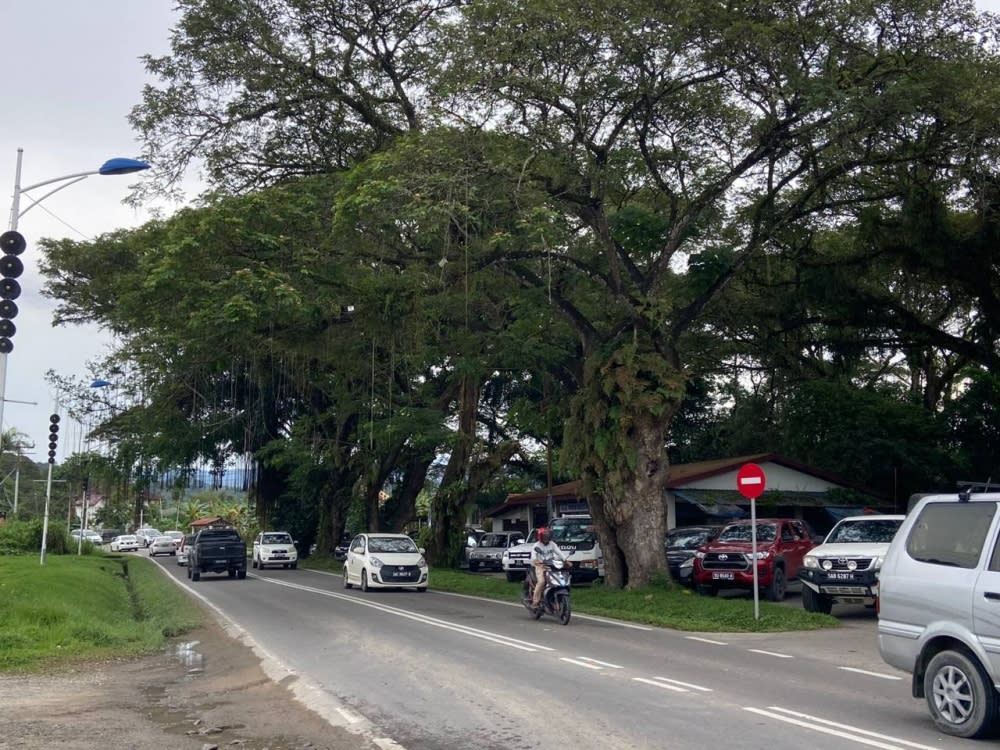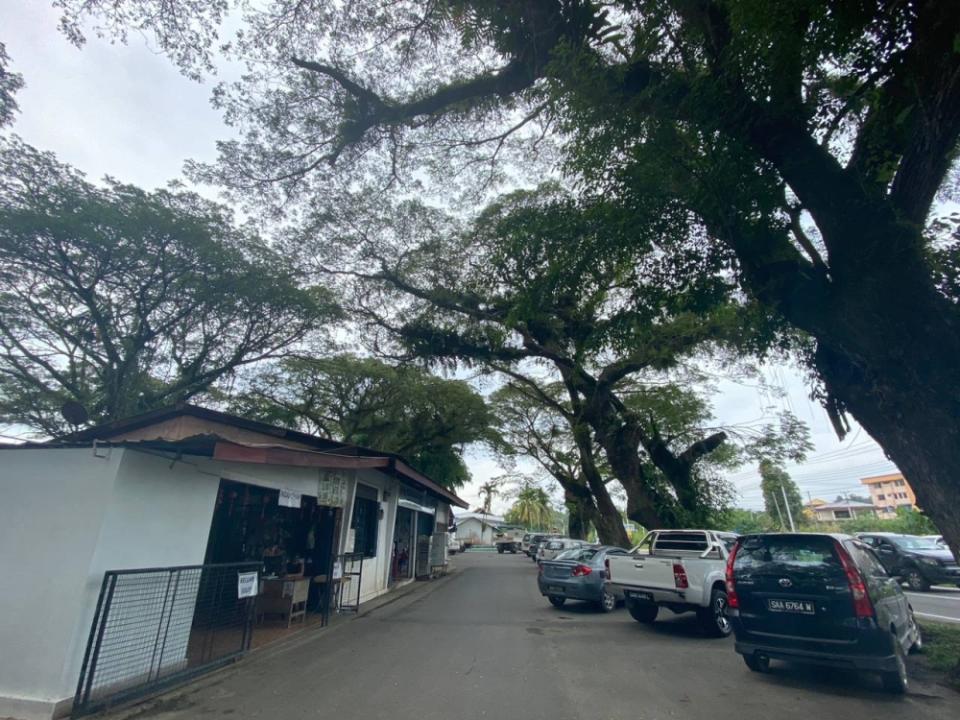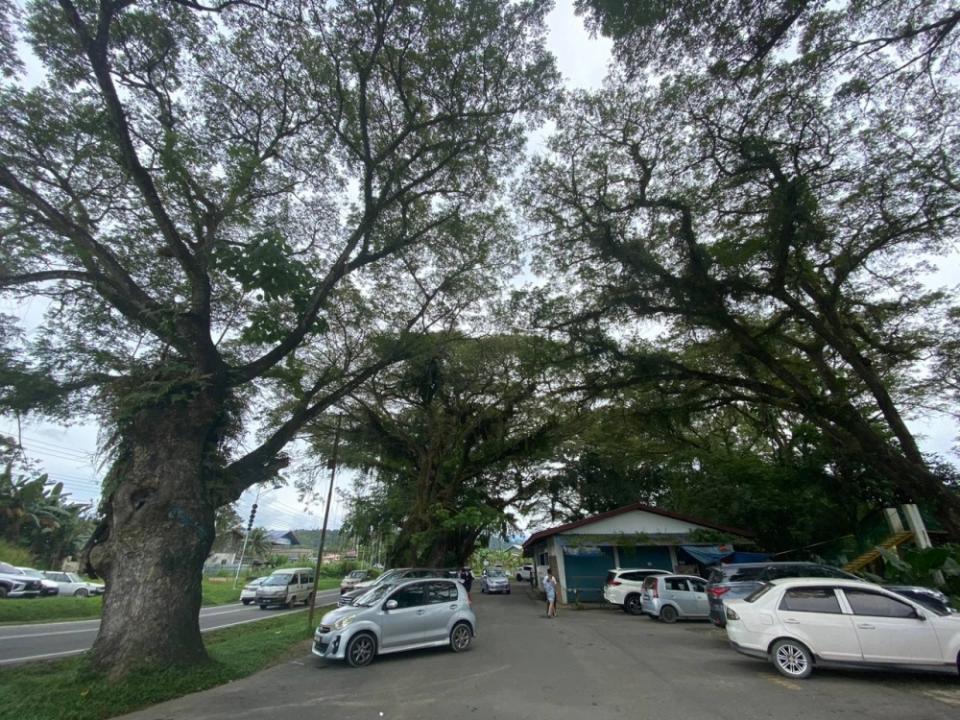Kasigui’s century-old raintrees should be preserved as symbols of Penampang heritage, say interest groups

KOTA KINABALU, Dec 29 — Interest groups have called for authorities to consider preserving five iconic raintrees in Kasigui for what they represent to the former capital of the Kadazan heartland of Penampang.
Local groups said that Kasigui has not been given the recognition it deserves over the decades, and chopping down the five raintrees, also known as Samanea saman, and believed to be a century old, will be the final nail in the coffin for the historical area.
Kepayan assemblyman Jannie Lasimbang is among those who feel that the trees have been a part of Penampang’s identity and history for at least four generations and that alone is a good enough reason to preserve them for future generations.
“The trees and the area are a historically valuable aspect of Penampang. Many people’s childhood memories and Penampang’s past are intertwined with Kasigui, the trees, the river and the old shoplots. They may be old, but they are a beautiful and significant landmark for Penampang,” said Lasimbang.
The DAP lawmaker, whose hometown is a short walk away on a suspension bridge from Kasigui over the Moyog River, said she has contacted the Works Department over the public concern and proposed alternatives that bypass the trees and the adjacent row of shoplots.
“I have forwarded suggestions to realign the road. The director of JKR Penampang said she will look into the suggestion and bring it up during their next meeting. But I think a realignment is doable,” she said.
She said that the trees, which have deep roots, were also good for strengthening the ground in an area where floods are commonplace.
The Penampang community has been awash with rumours that the raintrees along the main road from the town leading to the interior district of Tambunan and beyond will be felled to make way for a road-widening project to ease the traffic congestion heading into the state capital of Kota Kinabalu.

Locals believe that the tall, wide-canopied rain trees are tied to the area’s rich history and the stretch of riverside road should be preserved as a heritage area. — Picture courtesy of Eric Ye
Landscape architect Eric Ye, who grew up in Kasigui, said that the trees were a symbol of the area’s rich past, and that the small stretch of less than a 100m should be earmarked as a heritage site.
“The trees are a significant landmark, but the entire area is also rich with history. It was a bustling centre of activity, where far-flung villagers from the salt trail would come by foot or boat, and sell their produce under the tree.
“It was a market area, a meeting point, a landmark... Kids, including myself, played beneath the expansive shade of the trees,” he said.
Ye, 62, said that he understood the need for a road expansion to accommodate traffic during peak hours.
“However, there should also be due consideration for other factors, like the viability of preserving the trees, and the area’s priceless history. You cannot look at it from a technical aspect alone and dismiss it as purely sentimental. History and culture are what gives a place its soul.
“Maybe a good solution is to look at it holistically, and compromise by realigning the road closer inland and preserve the entire area and make it a heritage site. The authorities would have to work together to provide a better growing environment for the trees that would most definitely be impacted by the construction work,” he said.
Sabah Environmental Protection Association president Alexander Yee said that a proper assessment of the trees should be made, along with the Works Department’s plan for the area, before roadworks proceed.
“If the trees are healthy and stable, an effort should be made to keep them even if it’s an expensive exercise. The existing growing area for these mega trees is just too tight for proper, lasting root development, especially if the trees need to be there for a few decades more.
“It is important to commemorate historical aspects of our culture. Kasigui was the administrative centre of Penampang. So if the assessment allows, revise the road alignment and enlarge and preserve the Kasigui heritage area,” he said.

Locals believe that the tall, wide-canopied rain trees are tied to the area’s rich history and the stretch of riverside road should be preserved as a heritage area. — Picture courtesy of Eric Ye
The trees, planted in the early 1900s during the British colonial era, were favoured for their robustness and wide canopy that provided both shade and shelter. Hundreds of raintrees are found across the state, particularly in major towns where they acted as a central meeting point.
In Kasigui, the five trees, some two storeys high, are situated along a busy main road, next to a row of shoplots that also may be demolished to make way for development.
If carried out, the widened road will run parallel to the flood prone Moyog River.
Since rumours of the felling of the trees began to gather pace, people have been stopping by the shoplots and trees to take photos for nostalgia’s sake.
In the state capital, several raintrees were earmarked as heritage trees by City Hall and are maintained for their prominence.



